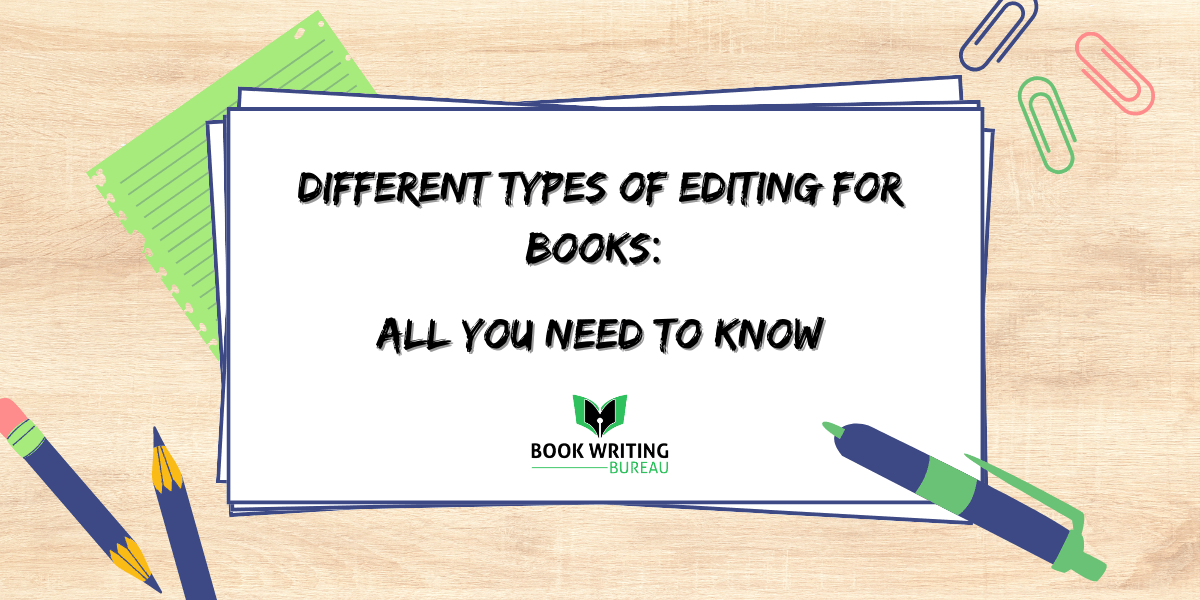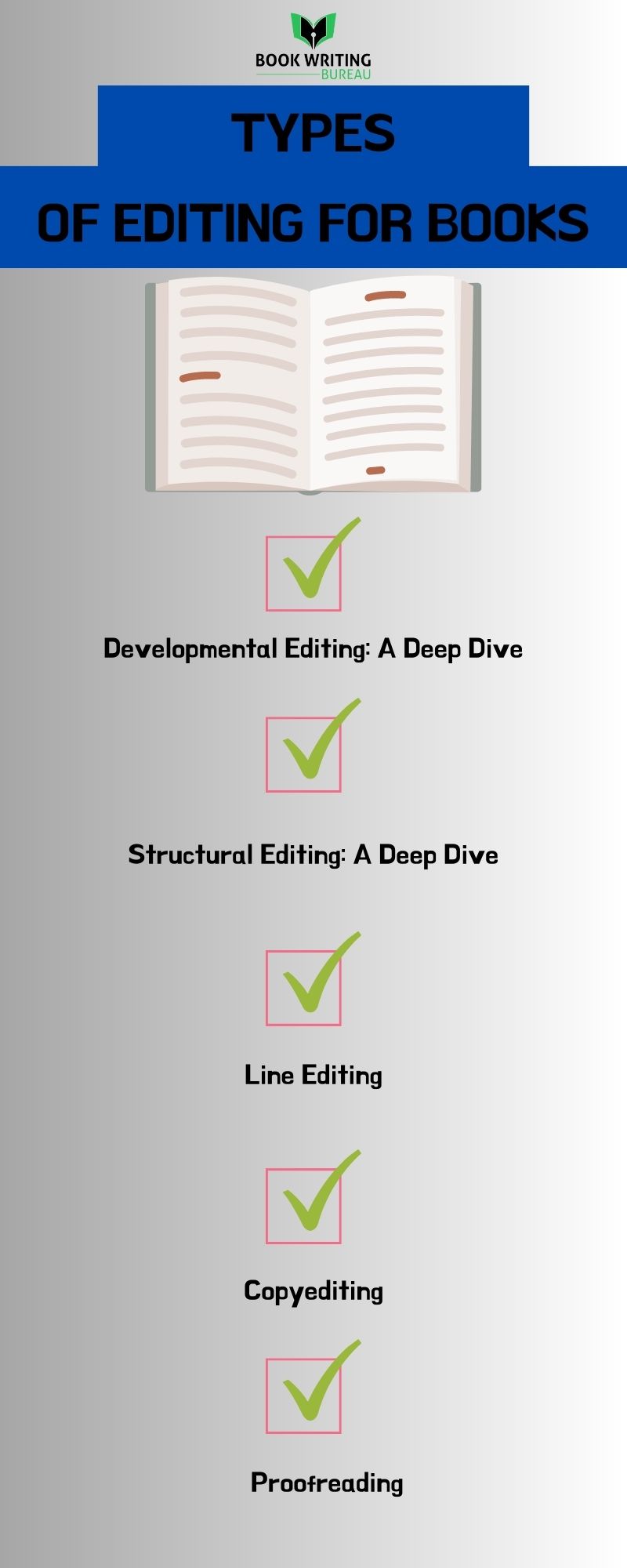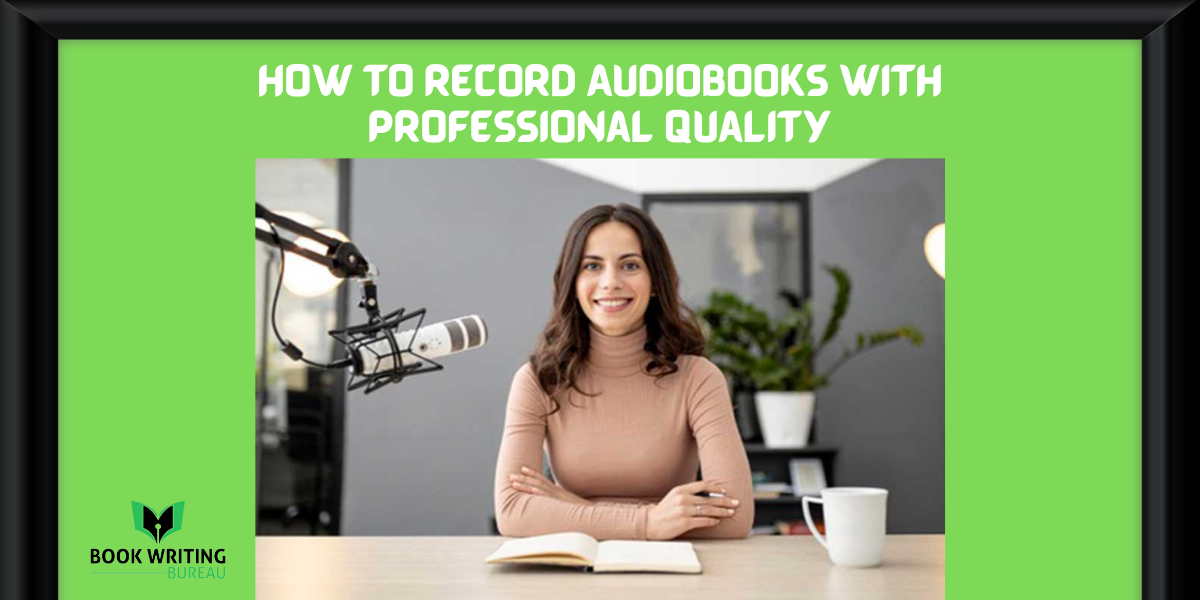
Editing
Listen to the article in its entirety.
Imagine crafting a beautiful sculpture. First, you shape the general form and refine and polish every detail. Similarly, in the world of books, editing is that refining step. It transforms a raw manuscript into a polished gem. Simply put, editing ensures a book’s message shines clearly without confusing bits.
Moreover, editing smooths those paths as we transition from one idea to the next, making the journey enjoyable for readers. Without this vital step, even great ideas can get lost or misunderstood. So, just as sculptors use tools to perfect their art, writers turn to editing to perfect their stories.
What is editing?
Editing is reviewing and making changes to a piece of writing to improve its clarity, accuracy, and overall quality. Think of it as polishing a rough gem. First, you start with the bigger picture, checking the structure and flow. Then, you narrow down, looking at each sentence and word. Transitioning from one idea to the next becomes smoother.
Moreover, mistakes in grammar, spelling, and punctuation are fixed. Ultimately, editing ensures that readers understand the message clearly and easily. It’s a vital step in making any written work shine.
Different Types of Editing For Books

1- Developmental Editing: A Deep Dive
So, you’ve written a book or are in the process of writing one. That’s fantastic! But what comes next? Enter developmental editing.
At its core, developmental editing is like a guiding hand. It’s all about looking at the big picture of your book. Think of it as examining the foundations of a building. This type of editing doesn’t delve into the nitty-gritty of grammar or punctuation; instead, it focuses on broader elements like plot, characters, themes, pacing, and overall structure. Its purpose? Ensure your story or content flows logically and engagingly, resonating well with readers.
Now, when should you seek a developmental editor? Ideally, once you’ve got your first draft down. This stage is the perfect time to evaluate the story’s core elements. It’s a chance to see if your characters’ journeys make sense if the pacing feels right, and if the story remains compelling from start to finish.
If you’re an author on the hunt for an ebook editing service or a developmental editor, here are some handy tips.
Research is key.
Find someone experienced in your genre. Each genre, romance, thriller, or sci-fi, has its nuances. An editor familiar with those can offer invaluable insights.
Stay open-minded
Remember, feedback, even if it suggests major changes, is there to uplift your work. It’s a tool, not criticism.
Communicate and ask questions.
If something feels off or you’re unsure about a suggestion, have a chat. A good editor will always be open to discussion.
2- Structural Editing: A Deep Dive
At the heart of a well-composed book lies structural editing. Let’s break it down.
Overview of its Role:
Imagine reading a book where the events jump back and forth with no rhyme or reason or a non-fiction piece that discusses advanced concepts before introducing the basics. Confusing, right? This is where structural editing steps in. Its primary role is to organize content. Like a skilled architect, a structural editor ensures that each book section follows a logical order, making the content coherent and engaging.
Difference from Developmental Editing:
Now, you might wonder how this differs from developmental editing. Think of this type of editing as the foundation and structural editing as the blueprint. While developmental editing shapes the core ideas, characters, and themes, structural editing arranges these elements methodically. The former asks, “Is the story compelling?” while the latter questions, “Does the story flow logically?”
Importance in Refining Book Structure:
Transitioning to the significance of structural editing, and its value cannot be stressed enough. A refined structure keeps readers hooked. Have you ever felt lost while reading, only to realize the content’s disorganization was the culprit? Structural editing prevents this. This type of editing ensures that each chapter leads seamlessly into the next, making the ebook reading journey intuitive and enjoyable.
3- Line Editing
Line editing, often mistaken for mere proofreading, is a meticulous phase focused squarely on the craft of writing. It gets deep into the structure of your sentences, the choice of your words, and the flow of your paragraphs. Unlike the broad sweeps of developmental editing or the rigorous grammar checks of copyediting, line editing finesses the manuscript line by line. Think of it as the editor wielding a fine brush, refining the author’s voice and making sure each sentence is the best version of itself.
How it Enhances the Flow and Style
The beauty of line editing lies in its ability to smoothen the narrative. Transition words are emphasized, repetitive phrases are pruned, and clumsy sentences are reshaped. By scrutinizing and enhancing each line, the editor ensures that the narrative moves seamlessly, maintaining rhythm and pace. Furthermore, the style becomes more pronounced and consistent. It’s like tuning an instrument – the story remains the same, but how it’s told becomes clearer and more captivating.
Why It’s Crucial for Narrative Consistency
Imagine reading a book where the tone shifts or the characters’ voices seem inconsistent. It’s jarring, isn’t it? Line editing ensures narrative consistency by focusing on the finer nuances. It checks for continuity in character voices, ensures consistent use of terminology, and maintains a steady tone throughout. Without line editing, the risk of narrative hiccups and lapses is high. Such inconsistencies can break immersion for a reader, making it harder to engage with or believe in the story.
4- Copyediting
Copyediting, in its essence, is the meticulous process of reviewing and correcting a written piece to improve its clarity, coherence, and overall quality. At this stage, in this type of editing, an eagle-eyed editor scans the manuscript, focusing on the nitty-gritty of language, ensuring each word, sentence, and paragraph is precise and in its best form. Unlike developmental or structural editing, which deals with broader aspects like content structure or plotlines, this type of editing is about the details. It differentiates itself by zeroing in on the technical aspects, ensuring a piece isn’t just well-written and error-free.
Role in Grammar, Punctuation, and Style
Grammar is the backbone of any written work, establishing clear communication. In the realm of copyediting, grammar holds immense significance. Here, editors sift through sentences to spot and rectify grammatical mishaps, ensuring the text flows seamlessly. Similarly, punctuation plays a pivotal role. The placement or omission of a single comma can drastically alter a sentence’s meaning. With their keen attention to detail, copyeditors ensure that every punctuation mark is rightly placed, enhancing clarity.
Then there’s the matter of style. While it might sound subjective, many book publishing services or authors adhere to specific style guides, like the APA, Chicago, or MLA. A copyeditor ensures that the manuscript aligns with the chosen style guide, from citation formats to word choices, guaranteeing consistency.
5- Proofreading
Proofreading is the final, essential checkpoint before a manuscript becomes a finished product. Imagine having embarked on a long journey—crafting the plot, developing characters, refining the structure, and polishing each sentence.
As you approach the destination, proofreading serves as the gatekeeper, ensuring you cross the finish line with finesse. After all the efforts put into writing and initial editing, this stage ensures that all the hard work culminates in a piece devoid of minor mistakes.
Focus on Minute Details and Errors
Diving deep into the manuscript, proofreading is not just about catching the obvious spelling mistakes; it’s about noticing the overlooked and often inconspicuous errors. These can range from double spaces after a period to a missing comma or a slight inconsistency in font size. The devil, as they say, is in the details. At this stage, in the type of editing, the proofreader adopts a laser-focused approach, meticulously scanning each line. Their keen eyes pick up on those tiny imperfections that can easily escape a casual or even trained glance. Indeed, while the overarching narrative might be compelling, these small slip-ups can jolt a reader out of immersion.
Importance Before Final Print
It’s tempting to rush to the finish line, especially after spending months, if not years, working on a book. However, the significance of proofreading cannot be overstated. Skipping this crucial step can lead to regrettable errors in the final custom book printing, diminishing the quality of the work and potentially undermining the author’s credibility. In a way, proofreading is the seal of professionalism. It ensures that readers are met with a clean, coherent, and consistent text when they dive into the narrative, allowing the story or content to shine without distracting errors.

Helpful Tips and Tools for Book Editors
Before diving into tools, it’s vital to cultivate the right mindset. Successful book editors require patience, a keen eye for detail, and a deep understanding of narrative flow. Additionally, it’s essential to approach each manuscript with an open mind, recognizing that each author has a unique voice that must be preserved.
Tips for Effective Book Editing
-
Establish Clear Communication
Begin by setting clear expectations with the author. Understand their vision and clarify any doubts right from the start. This proactive approach paves the way for smoother editing.
-
Read First, Edit Later
Instead of diving straight into editing, first read the manuscript thoroughly. This provides a sense of the story’s flow and helps understand the author’s voice.
-
Maintain Consistency
Ensure that the writing style, terms, and character details remain consistent. Keeping a style sheet or a list of characters and their traits can be incredibly beneficial.
Essential Tools for Book Editors
-
Grammarly
This is a must-have tool for editors. Beyond simple grammar checks, Grammarly offers style and tone suggestions, making the editing process more efficient.
-
Hemingway Editor
For ensuring high readability, the Hemingway Editor is a top choice. It highlights complex sentences, suggests simpler alternatives, and identifies passive voice, which can hinder engaging storytelling.
-
ProWritingAid
This comprehensive tool provides feedback on style, grammar, and structure. Moreover, it offers detailed reports on overused words, pacing, and more.
-
Trello or Notion
Staying organized is crucial. Platforms like Trello or Notion are excellent for managing tasks, setting deadlines, and keeping track of editing stages.
Conclusion
In the literary world, editing is not just a task—it’s an art, a science, and, most importantly, a necessity. Every book that has left a mark, every narrative that has resonated, owes a great deal to the meticulous layers of editing it underwent. Let’s swiftly recap the significance of each type.
To all the budding and seasoned authors, it’s crucial to understand that writing is the first step. The magic often lies in revising, reshaping, and refining. Investing in quality editing isn’t just about correcting mistakes—it’s about elevating your work to its highest potential. Just as a painter wouldn’t leave their artwork unfinished, authors should ensure their words, too, are presented in the best light. Every type of editing plays a unique, invaluable role in this journey. Embrace them, and let your work shine its brightest.



